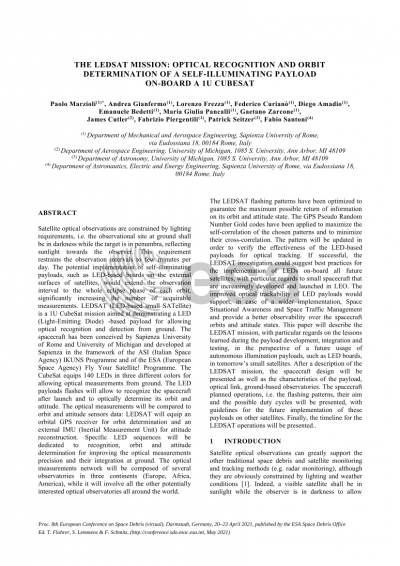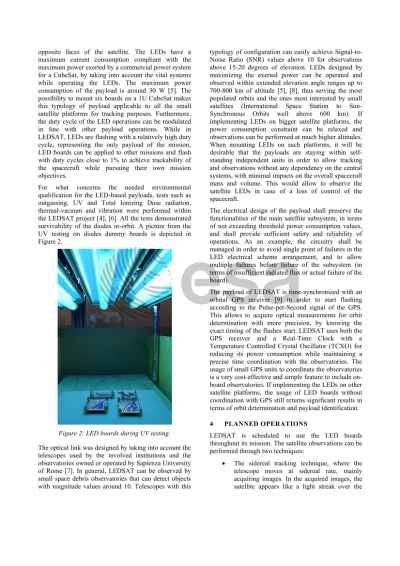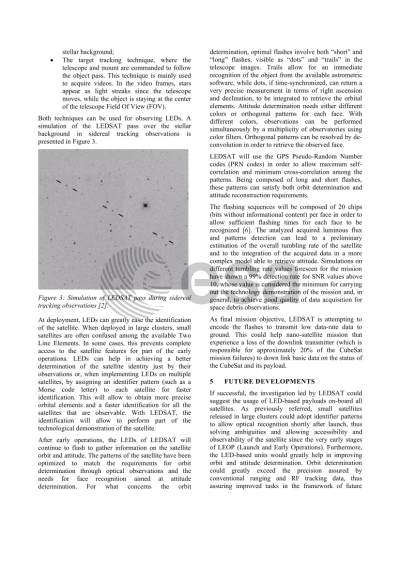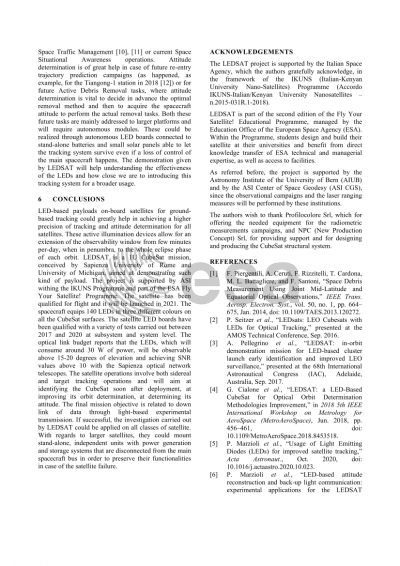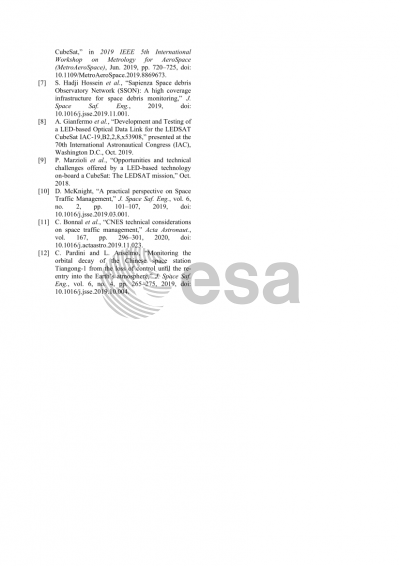Document details
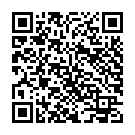
Abstract
Satellite optical observations are constrained by lighting requirements, i.e. the observational site at ground shall be in darkness while the target is in penumbra, reflecting sunlight towards the observer. This requirement restrains the observation intervals to few minutes per day. The potential implementation of self-illuminating payloads, such as LED-based boards on the external surfaces of satellites, would extend the observation interval to the whole eclipse phase of each orbit, significantly increasing the number of acquirable measurements.
LEDSAT (LED-based small SATellite) is a 1U CubeSat mission aimed at demonstrating a LED (Light-Emitting Diode) -based payload for allowing optical recognition and detection from ground. The spacecraft has been conceived by Sapienza University of Rome and University of Michigan and developed at Sapienza in the framework of the ASI (Italian Space Agency) IKUNS Programme and of the ESA (European Space Agency) Fly Your Satellite! Programme. The CubeSat equips 140 LEDs in three different colors for allowing optical measurements from ground.
The LED payloads flashes will allow to recognize the spacecraft after launch and to optically determine its orbit and attitude. The optical measurements will be compared to orbit and attitude sensors data: LEDSAT will equip an orbital GPS receiver for orbit determination and an external IMU (Inertial Measurement Unit) for attitude reconstruction. Specific LED sequences will be dedicated to recognition, orbit and attitude determination for improving the optical measurements precision and their integration at ground. The optical measurements network will be composed of several observatories in three continents (Europe, Africa, America), while it will involve all the other potentially interested optical observatories all around the world.
The LEDSAT flashing patterns have been optimized to guarantee the maximum possible return of information on its orbit and attitude state. The GPS Pseudo Random Number Gold codes have been applied to maximize the self-correlation of the chosen patterns and to minimize their cross-correlation. The pattern will be updated in order to verify the effectiveness of the LED-based payloads for optical tracking.
If successful, the LEDSAT investigation could suggest best practices for the implementation of LEDs on-board all future satellites, with particular regards to small spacecraft that are increasingly developed and launched in LEO. The improved optical trackability of LED payloads would support, in case of a wider implementation, Space Situational Awareness and Space Traffic Management and provide a better observability over the spacecraft orbits and attitude states.
This paper will describe the LEDSAT mission, with particular regards on the lessons learned during the payload development, integration and testing, in the perspective of a future usage of autonomous illumination payloads, such as LED boards, in tomorrow’s small satellites. After a description of the LEDSAT mission, the spacecraft design will be presented as well as the characteristics of the payload, optical link, ground-based observatories. The spacecraft planned operations, i.e. the flashing patterns, their aim and the possible duty cycles will be presented, with guidelines for the future implementation of these payloads on other satellites. Finally, the timeline for the LEDSAT operations will be presented.
Preview
